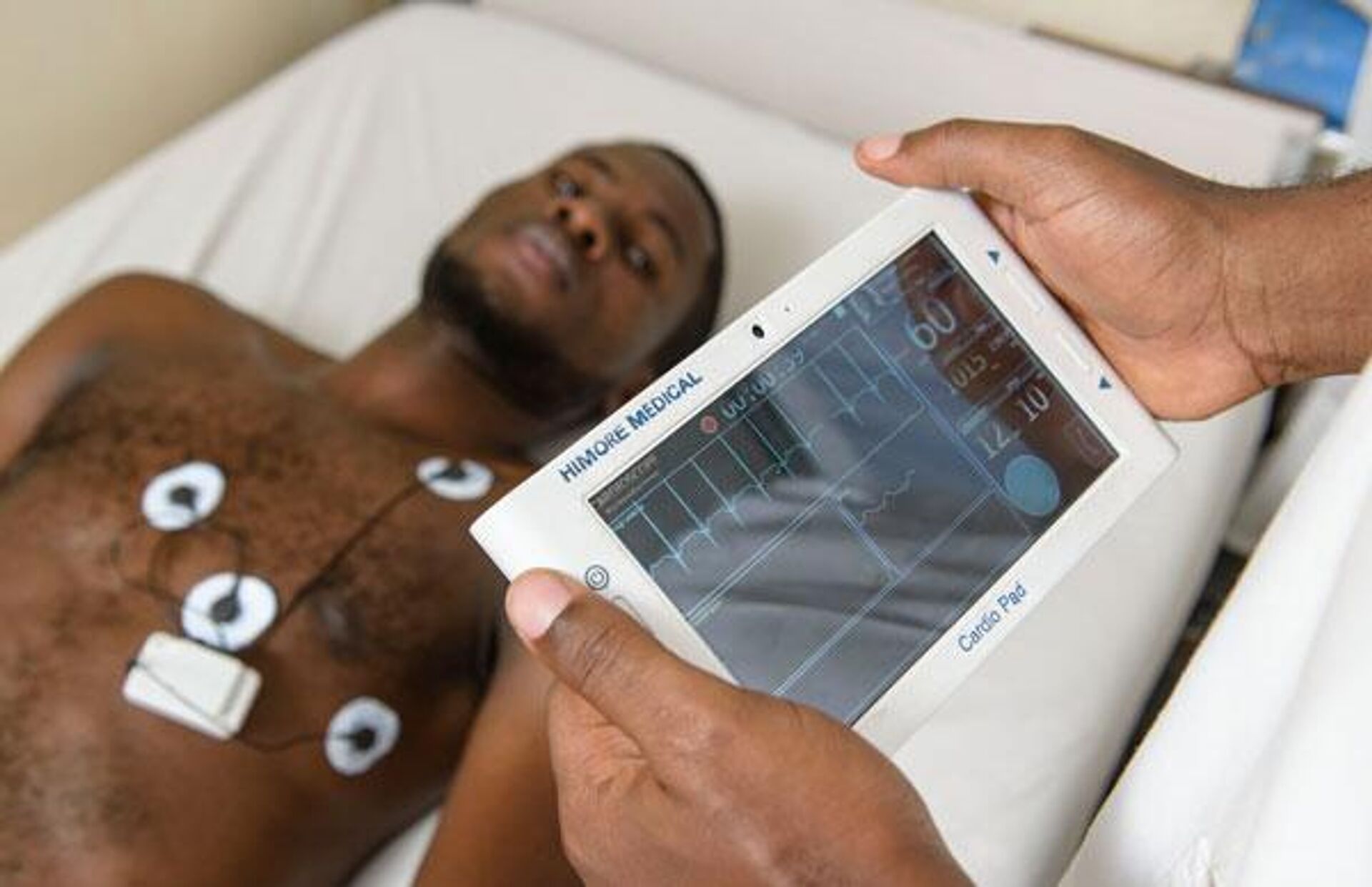https://en.sputniknews.africa/20231110/world-science-day-for-peace-and-development-what-mark-has-africa-left-1063450380.html
World Science Day for Peace and Development: How Do African Inventions Change the World?
World Science Day for Peace and Development: How Do African Inventions Change the World?
Sputnik Africa
Every year on 10 November, the World Science Day for Peace and Development is celebrated to highlight the vital role of science in everyday life. The day was... 10.11.2023, Sputnik Africa
2023-11-10T17:22+0100
2023-11-10T17:22+0100
2023-11-10T17:27+0100
features
science
ancient egypt
south africa
southern africa
cameroon
west africa
medicine
kenya
east africa
https://cdn1.img.sputniknews.africa/img/07e7/0b/0a/1063454303_0:0:960:540_1920x0_80_0_0_5ec359f8e484b6684b99ae0cc1137844.jpg
No-one will ever probably be able to say for sure who first discovered fire, invented tools and weapons, and designed the wheel. Just as it is not known who first tried to explain the rising and setting of the sun. All of these discoveries were the beginning of the search for scientific truth, and this search continues to this day because humans are by nature very curious and want to know everything about the world around them. Science plays an undeniable role in the development of society and human progress, expanding our knowledge in the natural, social, cosmic, medical and other fields and helping us to find answers to complex questions.On this day, Sputnik Africa provides a list of some of the most significant innovations hailing from Africa.Locks, Makeup, and CalendarThe ancient Egyptian civilization, which existed in northeastern Africa from the mid-4th millennium BC to the 4th-7th centuries AD, continues to amaze with its achievements even after thousands of years. The ancient Egyptians made a wide range of inventions, the power of which is that their fruits are still used by people today.One of the most useful Egyptian inventions for everyday life was the door lock. First appearing around 4000 BC, the lock had several holes through which pins protruded to block the movement of the bolt. The key was a curved stick with fixed pins spaced the same distance as the pins in the lock.The ancient Egyptian calendar, created to keep track of the changing agricultural seasons, is also worth mentioning. The Nile flood cycle was the main component of their calendar, and like the modern calendar, it consisted of 365 days. The ancient Egyptians also invented ink, toothpaste, the plow, wigs, and a host of other discoveries.Computed TomographyAllan McLeod Cormack was born in Johannesburg, South Africa, and studied at the University of Cape Town, where his scientific interest was in the advanced topics of nuclear and particle physics. He made history with a practical and very useful invention for doctors – computed tomography (CT scans). CT scans allow doctors to obtain visual data about the "insides" of patients. This visual inspection of the inside of the body, made possible by CT scans, allows doctors to identify affected organs. Cormack and English physicist Godfrey Hounsfield, who was working on the invention at the same time, were awarded the Nobel Prize in Physiology or Medicine in 1979.CardiopadContinuing the medical theme, an important invention in this field belongs to Cameroonian entrepreneur Marc Arthur. He has developed the Cardiopad, a touchpad-like device with embedded medical applications. Arthur's creation is capable of performing ECG tests on patients and also supports the transmission of test results to cardiologists via GSM network. The invention has found application in various parts of the world in situations requiring urgent diagnosis of cardiovascular diseases.Hippo Water RollerThe next invention coming from Africa is a fairly simple idea with life-changing results. The device, a reimagined wheelbarrow, carries 90 liters of clean water and is pushed rather than carried. Invented in 1991 by two South Africans, Petite Petzer and Johan Jonker, the device has given thousands of people worldwide access to safe, clean water.The sturdy rollers provide a much easier and more efficient way to collect water, empowering children, women and the elderly who no longer have to carry heavy loads on their backs.There are now 60,000 Hippo Rollers distributed in 51 countries around the world, reaching 600,000 people, according to the manufacturers.Sign-IOKenyan Roy Allela's latest invention could revolutionize the way people who use sign language communicate. His company, Sign-IO, is developing a glove that connects to a mobile app that recognizes hand movements in real time and translates them into speech using an internal database based on sign language. Users can even control the speed, pitch, and gender of the voice that represents them.The list is certainly incomplete, but it demonstrates Africa's participation in the global advancement of science for the benefit of humanity.
https://en.sputniknews.africa/20231109/range-of-african-nations-making-great-strides-in-cardiology-globally-says-sa-professor-1063433881.html
ancient egypt
south africa
southern africa
cameroon
west africa
kenya
east africa
Sputnik Africa
feedback@sputniknews.com
+74956456601
MIA „Rossiya Segodnya“
2023
Maxim Grishenkin
https://cdn1.img.sputniknews.africa/img/07e7/0a/17/1063018107_0:0:1104:1103_100x100_80_0_0_03090c85a11f5d2e8a19cf1d989443c9.jpg
Maxim Grishenkin
https://cdn1.img.sputniknews.africa/img/07e7/0a/17/1063018107_0:0:1104:1103_100x100_80_0_0_03090c85a11f5d2e8a19cf1d989443c9.jpg
News
en_EN
Sputnik Africa
feedback@sputniknews.com
+74956456601
MIA „Rossiya Segodnya“
Sputnik Africa
feedback@sputniknews.com
+74956456601
MIA „Rossiya Segodnya“
Maxim Grishenkin
https://cdn1.img.sputniknews.africa/img/07e7/0a/17/1063018107_0:0:1104:1103_100x100_80_0_0_03090c85a11f5d2e8a19cf1d989443c9.jpg
science, ancient egypt, south africa, southern africa, cameroon, west africa, medicine, kenya, east africa, technology, biotechnology
science, ancient egypt, south africa, southern africa, cameroon, west africa, medicine, kenya, east africa, technology, biotechnology
World Science Day for Peace and Development: How Do African Inventions Change the World?
17:22 10.11.2023 (Updated: 17:27 10.11.2023) Every year on 10 November, the World Science Day for Peace and Development is celebrated to highlight the vital role of science in everyday life. The day was proposed in 1999 at the World Conference on Science in Budapest, where the need for greater interaction between science and society was emphasized.
No-one will ever probably be able to say for sure who first discovered fire, invented tools and weapons, and designed the wheel. Just as it is not known who first tried to explain the rising and setting of the sun. All of these discoveries were the beginning of the search for scientific truth, and this search continues to this day because humans are by nature very curious and want to know everything about the world around them.
Science plays an undeniable role in the development of society and human progress, expanding
our knowledge in the natural, social, cosmic, medical and other fields and helping us to find answers to complex questions.
On this day, Sputnik Africa provides a list of some of the most significant innovations hailing from Africa.
Locks, Makeup, and Calendar
The ancient Egyptian civilization, which existed in northeastern Africa from the mid-4th millennium BC to the 4th-7th centuries AD, continues to amaze with its achievements even after thousands of years. The ancient Egyptians made a wide range of inventions, the power of which is that their fruits are still used by people today.
One of the most useful Egyptian inventions for everyday life was the door lock. First appearing around 4000 BC, the lock had several holes through which pins protruded to block the movement of the bolt. The key was a curved stick with fixed pins spaced the same distance as the pins in the lock.
In addition to the inventions, the same makeup application technique developed by the ancient Egyptians is used today. The Egyptians made their eyelids black with galena (lead glitter). It is curious that makeup was not only intended for Egyptian ladies, but also for men.
The ancient Egyptian calendar, created
to keep track of the changing agricultural seasons, is also worth mentioning. The Nile flood cycle was the main component of their calendar, and like the modern calendar, it consisted of 365 days. The ancient Egyptians also invented ink, toothpaste, the plow, wigs, and a host of other discoveries.
Allan McLeod Cormack was born in Johannesburg, South Africa, and studied at the University of Cape Town, where his scientific interest was in the advanced topics of nuclear and particle physics.
He made history with a practical and very useful invention for doctors – computed tomography (CT scans). CT scans allow doctors to obtain visual data about the "insides" of patients. This visual inspection of the inside of the body, made possible by CT scans, allows doctors to identify affected organs.
Cormack and English physicist Godfrey Hounsfield, who was working on the invention at the same time, were awarded the Nobel Prize in Physiology or Medicine in 1979.
Continuing the medical theme, an important invention in this field belongs to Cameroonian entrepreneur Marc Arthur. He has developed the Cardiopad, a touchpad-like device with embedded medical applications.
Arthur's creation is capable of performing ECG tests on patients and also supports the
transmission of test results to cardiologists via GSM network.
The invention has found application in various parts of the world in situations requiring urgent diagnosis of cardiovascular diseases.
The next invention coming from Africa is a fairly simple idea with life-changing results. The device, a reimagined wheelbarrow, carries 90 liters of clean water and is pushed rather than carried. Invented in 1991 by two South Africans, Petite Petzer and Johan Jonker, the device has given thousands of people worldwide access to safe, clean water.
The sturdy rollers provide a much easier and more efficient way to collect water, empowering children, women and the elderly who no longer have to carry heavy loads on their backs.
There are now 60,000 Hippo Rollers distributed in 51 countries around the world, reaching 600,000 people, according to the manufacturers.
Kenyan Roy Allela's latest invention could revolutionize the way people who use sign language communicate.
His company, Sign-IO,
is developing a glove that connects to a mobile app that recognizes hand movements in real time and translates them into speech using an internal database based on sign language.
Users can even control the speed, pitch, and gender of the voice that represents them.
The list is certainly incomplete, but it demonstrates Africa's participation in the global advancement of science for the benefit of humanity.





